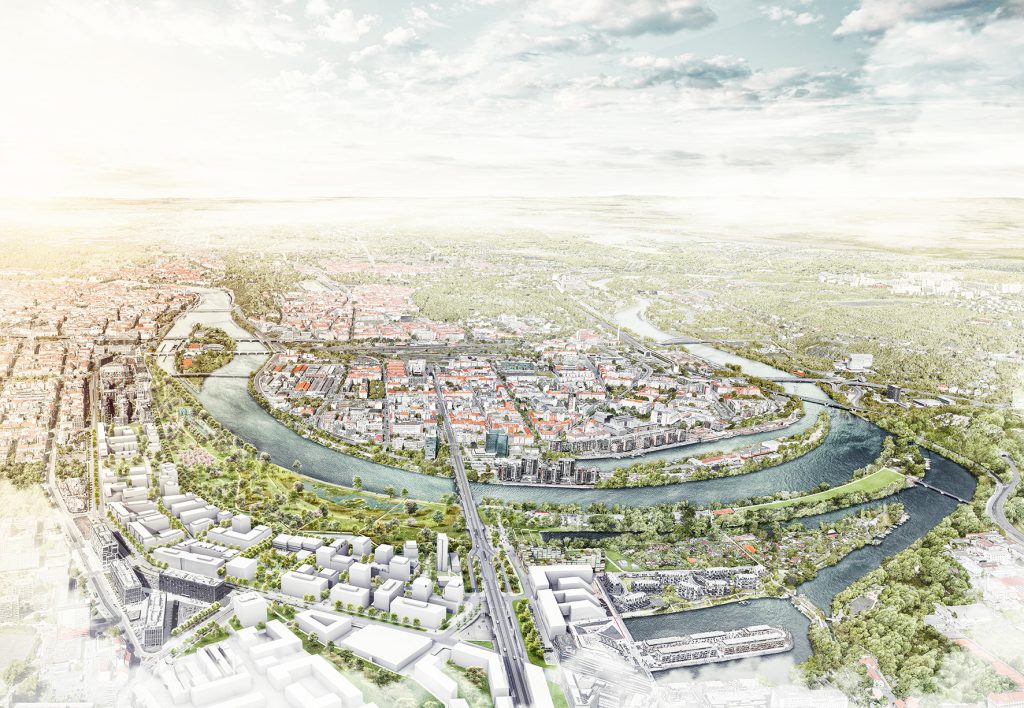The battle of Bears Ears is far from over

For a total of 354 days, Bears Ears was a National Monument of 540 hectares until President Donald Trump reduced the protected areas by 85 percent.
Billboard
Skyscrapper
Halfpage
For a total of 354 days, Bears Ears was a National Monument of 540 hectares until President Donald Trump abrogated Barack Obama’s Presidential Proclamation and reduced the protected areas by 85 percent. Some see this as a new war for federal control of Utah’s land – but not our author, Sean Michael. In TOPOS #102 Darkness, he reported about the Bears Ears. Here is the full version of the article.
“Speed”, J.B. Jackson opined, helps us to “re-establish a responsiveness—almost an intimacy—with a more spacious, less tangible aspect of nature.”
Were that always the case, the pace with which newly inducted Interior Secretary Ryan Zinke visited the ochre landscape of Bears Ears National Monument in Utah’s vast southeast corner, and in mere weeks later, recommended a reduction of its 547,074 ha, would suggest his intimacy was short-lived. Operating on directions from President Trump, and perhaps equally the wishes of the state’s most influential political voices—Senator Hatch, Rep. Bishop, Senator Lee, Rep. Chaffetz, all staunch Republicans—the outcome was considered a fait accompli. The die, in fact, was likely cast in the excess and hubris President Obama demonstrated through his monument designations (224M hectares), as he continued the history of Democrats establishing major land protection. The lone question most were asking was how grave the impending reduction would be, and the parlay it might represent in a larger reproach to earlier federal land protections.
Ironically, as both a Utahan and an avid explorer of our state’s canyon country, I had barely a clue where Bears Ears lay. And so, in 2016 and 2017, having studied the Monument further, I ventured there by motorcycle and later via Land Cruiser. Defined by redrock and Pinyon-juniper forest, it’s typical Southwest “4 Corners” landscape: jaw-dropping geology, rarely another vehicle, and a sense that we are strangers in this quiet land of hidden mysteries. The warnings of famed desert author Ed Abbey and wilderness guide Kent Frost echoed in my mind as the sun and temperature correspondingly fell, and the firmament of dark skies emerged over a warming campfire. Both desert rats and prophets, those men warned of the danger and allure of this country. And both warned of how competing interests vie for its exploitation.
Medium Rectangle
Halfpage
“The question, however, is whether the alternative future the states propose is better.”
Skyscrapper
Halfpage
Battles over the West and its lands—most recently with Bears Ears, now renamed Shásh Jaa’ National Monument, but going back for centuries—afford a revealing look into both our history and psyche as Americans. Foisted from ancestral owners, the lands argued over today tell of a hypocrisy writ large. Private property advocates, such as the hero/criminal Cliven Bundy and most Western U.S. politicians, are unwavering in their belief in private property protections, and continue to cry “land grab”, calling for the federal government to abandon claims to the acreage once stolen from Shoshone, Blackfeet, Pueblo, Navajo, Utes and others, and to pass title to the states. When one considers that within Utah’s boundaries over 66% of the land is federally controlled (second only to Nevada, at 81%), it’s understandable that a governor or legislator would want less meddling from Washington, DC. The question, however, is whether the alternative future the states propose is better.
Wallace Stegner, the incomparable chronicler of the Intermountain West, observed in Wolf Willow (1973), ”Anyone who has lived on a frontier knows the inescapable ambivalence of the old-fashioned American conscience, for he has first renewed himself in Eden and set about converting it into the lamentable modern world.” Mormon pioneers both ran from modernity and to the oasis they hoped to find beyond Illinois mobs. Their arrival in the Salt Lake Valley would spell an end to their remarkable journey, yet no true escape from the meddling of others, and the federal government in particular.
Though successful at taking land from the resident tribes, Mormon church leader and prophet Brigham Young and his followers were less effective at wresting control of the vast territory they sought in proposing the “State of Deseret” (encompassing current Utah, Nevada, over half of Arizona, and fully a third of California and Colorado) in 1849. That snub by the U.S. government forms an essential yet largely forgotten backcloth against which these contemporary land battles wage. More evident, the sense of property ownership “rights”, forged in our forefathers’ view of Manifest Destiny, lives on. And influence of both is strong, at least ‘out here in the West’.
Skyscrapper
Halfpage
“Only time and Tweets and the courts will tell what lies ahead.”
Skyscrapper
Halfpage
Yet more than ever before, westerners today are a dichotomous breed. This was evidenced by the factious split in the outdoor recreation industry over threats to Bears Ears, and the resulting imbroglio over the continued presence of its Outdoor Retailer Show in Salt Lake City. Such battles are far from over. Barely a year into an incomprehensible presidency, new lines are being drawn in the war over environmental protection. Even the seemingly sacrosanct Antiquities Act, the basis upon which presidents from Roosevelt to Trump have created (and now rewritten) national monuments, is poised to see a skirmish. What lies ahead? Only time and Tweets and the courts will tell. But of this I am sure; to love this land is to have spent time in it, to have Utah’s red dust infused in your gear as well as your soul. Longing for a land alone, however, is not enough. The devil lies in the details of how the land will be managed, for whom, and for what gain.
Dr. Sean E. Michael is Head of Landscape Architecture & Environmental Planning, Utah State University.












